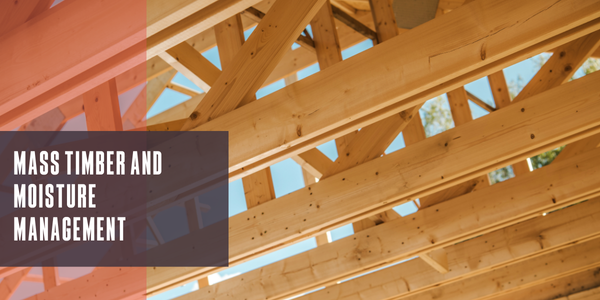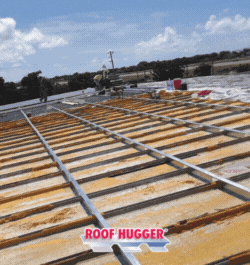Mass timber and moisture management
October 19, 2025 at 6:00 p.m.By Dani Sheehan.
Effective moisture protection helps safeguard mass timber construction and extend the performance of the roof.
Mass timber construction is on the rise and roofing contractors have an important role to play in this expanding market. In a recent episode of Roofing Road Trips®, Karen Edwards sat down with Chris Meyer and Aaron Gould from VaproShield to discuss how moisture management is becoming a critical part of mass timber projects, and why roofing contractors are central to getting it right.
What is mass timber?
“Mass timber is probably the most exciting thing in my career to happen in construction,” shared Aaron. Unlike OSB or traditional lumber, mass timber uses solid timber structural members such as cross-laminated timber (CLT) and glue-laminated beams (glulam). These materials are increasingly being used in place of concrete floor decks and steel framing because of their speed, strength and lightweight performance.
Why the growth?
Contractors and building owners are embracing mass timber for a variety of reasons. “Despite all the different interests, whether some people are interested in carbon reduction, some are interested in speed during construction, others are interested in the biophilia, the aesthetic of the mass timber and the way that the wood makes you feel – all of these are factors and different reasons for embracing mass timber,” Aaron explained.
Chris pointed out cost savings as another critical driver. Prefabricated panels arrive on-site ready to install, reducing labor and installation time compared to concrete or steel erection. “Getting somebody into a building even two months earlier can mean several million dollars in either profit or loss,” he shared. This speed is even more important in today’s fluctuating steel market. Where uncertainty still exists around steel prices, mass timber panels can be produced in standardized sizes, making replacement and delivery faster at a more consistent price.
Simplifying moisture management
A recent bank project shows how mass timber roofs come together. The building used glue-laminated timber panels with a low-slope roof. “This particular project used our SlopeShield Plus membrane as a temporary protection during construction,” Aaron shared. “And then it also became permanently part of the air barrier system.” From the factory, the panels arrived with the SlopeShield Plus membrane already applied. On-site, crews added a plywood layer, insulation, cover board and a single-ply TPO membrane. The dual-purpose protection of the membrane ensured long-term durability against moisture and air infiltration from start to finish.
Learn more about VaproShield in their Coffee Shop Directory or visit www.vaproshield.com.

About Dani
Dani is a writer for The Coffee Shops and AskARoofer™. When she's not writing or researching, she's teaching yoga classes or exploring new hiking trails.























Comments
Leave a Reply
Have an account? Login to leave a comment!
Sign In